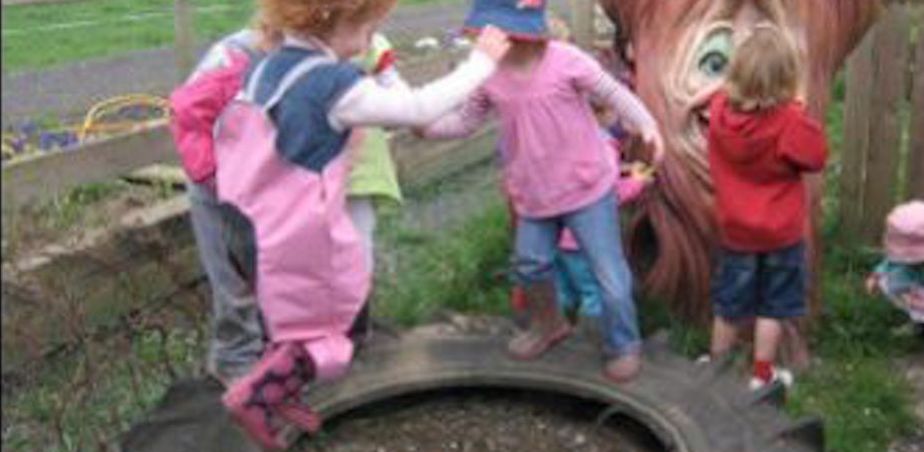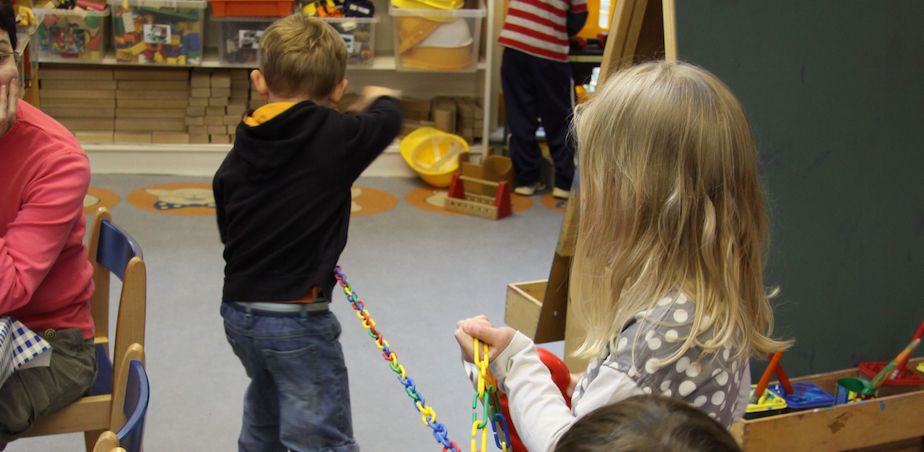Blog 2 – Carmel Brennan, Head of Practice Early Childhood Ireland

‘It is in playing, and only in playing, that the individual child or adult is able to be creative and to use the whole personality, and it is only in being creative that the individual discovers the self’

Carmel Brennan is Head of Training and Practice with Early Childhood Ireland, with responsibility for the organisation’s work in developing curriculum, improving practice and supporting services to work with the national frameworks. Their aim is to push the boundaries of our thinking and practice as we engage with the image of the competent, playful child. Carmel has also worked as an early childhood educator, mentor and researcher. Her research interests are in the areas of curriculum and particularly children’s play – the subject of her PhD thesis. More recently, she focusses on children’s co-construction of stories through play and the relationship between play and the arts in children’s lives. She edited the IPPA publication ‘Power of Play’ and has contributed chapters to ‘Early Childhood Education and Care’ (Mhic Mhathúna and Taylor (Eds), 2012), to the Pen Green publication ‘Using Evidence for Advocacy and Resistance in Early Years Services’ (McKinnon (Ed), 2014) and to two Kids Own reports on arts projects with young children, ‘Lullabies’ and ‘Being and Belonging’. She is also author of the essay ‘Artistic Enquiry in Early childhood Education’ on this portal.
The art of play is the art of living life to the full.
I’m a huge fan of Colwyn Trevarthen’s work. I think he constantly brings us into the real world of the human drives and dynamics and reminds us just how amazing we humans are. I’ve grouped the above photo and quote together because the photo, for me, speaks to the art of sharing fantasies of action and experience. This huge tractor tyre is now the edge of a ravine and the children dare to plunge into its fearsome waters – sharing fantasies of action and experience. Their story draws on other stories, on experiences and possibilities. I’m reminded of what Alison Gopnik describes as the most uniquely human characteristic, the ability to imagine. I’m thinking about Bruner’s contention that we imagine ourselves into being – that children are in the process of encountering and creating possible selves through the stories they create – possible mothers and fathers, possible big sisters, possible builders, astronauts, teachers, shopkeepers, doctors, dinosaurs and, here, ravine divers. And Carl Jung’s premise that the creation of something new is not achieved by the intellect but by the imagination. And Winnicott’s (1971:54) who says that
‘It is in playing, and only in playing, that the individual child or adult is able to be creative and to use the whole personality, and it is only in being creative that the individual discovers the self’.
Is it any wonder that play has survived evolution across all species? Is it any wonder that humans have brought it to such a fine art? There you go – the words play and art in one sentence! I’m interested in the relationship between play and art.
There is a recognition of this relationship in recent research in Ireland. The ESRI/Arts Council report (2016) ‘Arts and Cultural Participation among Children and Young People: Insights from the Growing Up in Ireland Study’ recognises ‘the mosaic of ways in which children and young people express themselves and interact with the world of culture’ and so their definition of art includes young children’s engagement in creative play and make believe games. There are some interesting findings. Just as with literacy and numeracy and all forms of development, they find that make-believe play is a precursor to the development of an artistic and creative imagination. I welcome this recognition for play. I don’t like the term precursor – it belongs to that school of giving priority to adult forms of maturity. We need to remind ourselves that children do some things better than adults, among them is play and the easy shift into the imaginary and creative world. Creativity is at its peak in early childhood – not a precursor to better things. Creativity is at its peak because children need to learn so much in such a short time and the innate creative drive makes it possible.
Another interesting finding is that, according to their parents, five year olds engage in pretend play while 3 year olds don’t. How could that be? I have no doubt that all these parents play pretend games with their children from the moment they are born. They pretend to be surprised, shocked, overjoyed, lost, found, toe eaters, belly guzzlers. They look for their children’s lost heads and hands as they pull on a vest or encourage them to wriggle through sleeves. They drive buggies with engine sounds. They pretend to be dogs and cats and any animal that makes a sound. They play hide and go seek. They feed teddy and put him to bed. They do all these things to help children to manage, and to engage, entertain and humour them because nature tells us that the dramatic, emotional, fun filled world of play is the way to bring children into the dynamics of human communication, into the rituals and routines of life, into cooperation and competence. These are all art-full interactions, full of drama, emotion, movement, big gestures and, of course, creative meaning making. That’s why people like Stern and Trevarthen call it a dance. It is an art form.
Of course, children do not engage in play to create art. The primary purpose of play, according to Sutton Smith (1997), is simply to enjoy and become better at playing. The baby’s exploratory body movements, exercising vocal cords, moving backwards and forwards, rolling and swinging are all done for their own sake, for the excitement and pleasure of movement itself. And the wonderful trick of nature is that the leap from a rock not only pleases but develops the body and, at the same time, teaches about gravity and, most importantly, exercises the brain so that it stays sharp, flexible and innovative. Body and brain are being sculpted in play.
Drawing on another art form, children add story to their play. Adding narrative brings children together and generates companionship, adds excitement, and sustains the play. Play narratives require certain creative skills – ideas, improvisation, role enacting, imagination, plot development, dialogue in keeping with the persona – all very demanding skills. Players need to present as authentic, convincing, trustworthy as well as innovative and challenging. Being an active participant in play stories is important if your voice is to be included in the view of the world being constructed. Children, as Stainton Rogers (1995) says, are creating the ‘narratives through which we render ourselves and our worlds intelligible’ – a shared frame for seeing the world. I’m a collector of those narratives and I wallow in them because they speak to me of children’s empathy and kindness, of their fears and consolations, of their experiences of the adult world and its rules, rituals and power struggles. Gussin Paley tells us that play is like theatre with universal themes such as someone is lost and finds a friend, is unloved and finds love, confronts life and death, is weak and then strong. Think of these themes as you read this play story:
A group of 5/6 children come running up to me screaming and laughing. I kneel and ask what’s happened. They talk about the Dragon living behind the shed. We go to have a look and once again they all run away screaming. Rob’s suggestion that they get swords and shields to fight the dragon meets with agreement so off they go in search of useful material. They come back with brushes, spades, buckets and bin lids to fight the dragon. Eventually they decide that the dragon is too powerful and they must find another way to fight him.
Katie then puts her sword down and goes behind the shed, much to the shock and resistance of the others. She returns moments later explaining that “it was a mammy dragon” who was protecting her “baby dragons”. Everything changes. The children decide to keep the dragon as a pet. They name her “Arnold the Dragon”, and have great fun taking turns to fly around with her. Once inside, the children draw pictures of Arnold and even go to the gate at home time to say goodbye to her.
It seems to me that these children are also working on a very important moral – and that is, that perspective changes everything. Perspective can change an invincible dragon into a pet to be cared for. And Katie demonstrates that changing perspective takes leadership and courage – and caring is comforting for everyone. The children have co-constructed an experience, generated strong feelings and developed a story – each element in itself is an artistic experience.
So, is play art? Does it involve a desire for meaning, curiosity, wonder, feeling, thinking, imagining, relating, expressing? Does it involve active participation in creating something new? Is it about finding joy? These, according to people such as Ann Pelo, Vea Vecchi and Deb Curtis, are the key indicators of an art experience – and children’s make-believe play ticks every box. Don’t be fooled by the lure of teaching young children lessons that they can repeat and show off to adults. We can train children to do routine things –say hello, please and thank you, eat with a spoon, dress themselves, recite the ABC, sound out words, count to ten, learn multiple times tables etc. but.. for children to be alert, responsive and intelligent thinkers they must engage in the art of free play. Nothing is as important as the experience of play for the sake of play – for the fun of it – for the very fact that through play we learn the skills needed for play and we get better at them – such skills as the serve and return of interaction, the mind reading, the intersubjectivity, formulating ideas, running with the ideas of others, being fun to be with, being a cooperative, giving team player, generating energy and enthusiasm, problem solving on the hoof. The most important thing that children learn through play is how to play well -they are the traits that make for a healthy and successful life across the social, economic and health spectrums. Like all the important things in life, they generally only get assessed when they’re missing! Play is improvisation, drama, design, creative use of materials, symbolism, dance, story-creating and telling, characterisation, fantasy, imagination and real life enquiry. The art of play is the art of living life to the full.

